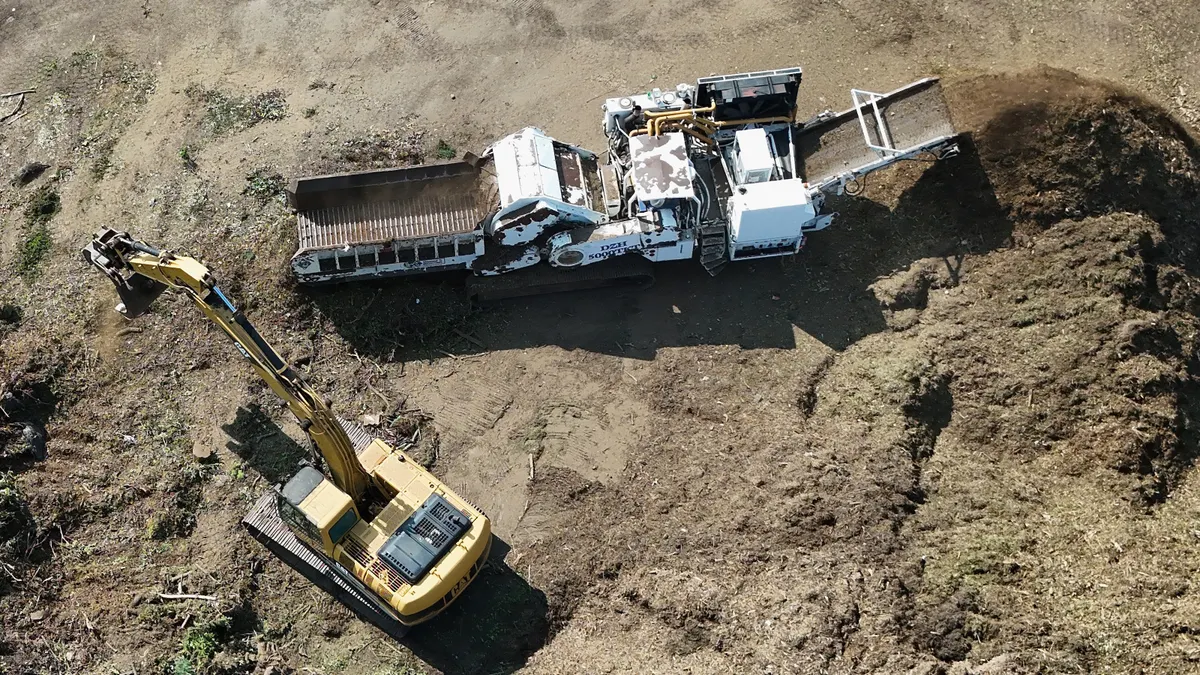This feature is a part of "The Dotted Line" series, which takes an in-depth look at the complex legal landscape of the construction industry. To view the entire series, click here.
Last year, the city of Detroit fined several contractors a total of $500,000 for failing to meet the local hiring requirements they had agreed upon in their construction contracts for work on the new $627.5 million Detroit Red Wings arena. The 51% local-resident requirement was steep, but contractors held job fairs and offered up training programs in the hopes of feeding the pipeline that would make it possible for them to hit the mandated hiring goal.
Nevertheless, they fell short. City officials supervising the program said the contractors acted in good faith but just couldn’t drum up enough locals.
Unlike the Detroit hockey arena, other workforce programs have seen success in attracting enough workers and training them in order to help the project’s staffing needs, such as with the new Minnesota Vikings stadium in Minneapolis. Minnesota Stadium Facilities Authority officials said recruitment and training efforts made it possible to meet and exceed their minority and local hiring requirements within two years after breaking ground.
These kinds of workforce development requirements and hiring quotas are typically found in project labor agreements (PLAs), or collective bargaining contracts that determine worker conditions like pay rate, work hours and benefits. These agreements are typically between the project owner or developer and one or more trade unions, but every company that participates in the project is required to abide by it.
Worker training programs can come in all shapes and sizes — from those required by contract as part of a PLA to employer initiatives meant to build a pipeline of skilled craft workers and future business leaders. Contract-mandated programs aren't the only path to building up the future workforce; companies are taking the initiative to offer training and development options for their workers.
Training through PLAs and industry groups
Tom Owens, director of marketing and communications for North America’s Building Trades Unions (NABTU), said PLAs typically offer an advantage for owners and contractors. "When a project is bound by the terms and conditions of a PLA, that includes access to the joint-labor management training programs," he said.
As signatory companies experience ebbs and flows in their businesses, they can access a skilled workforce through the union and the registered apprenticeship system, according to Owens. "They will have to make a business decision to determine if they want to expand their business using this type of a model," he said.
A properly developed and executed onsite worker training program can be a success, but what about when there’s no PLA? Do contractors only provide workforce training when they’re made to do so by the conditions of a contract? The Associated Builders and Contractors’ Director of Workforce Development Mike Glavin responded with an emphatic no.
"That’s not how you get to have a high-quality workforce," he said. "[Member companies] say, 'We’re going to have the best craft workers on our job site.' That is the reason why they have internal training programs."
The ABC, its chapters and member companies combined invest $1.1 billion annually into training and development programs, according to Glavin. The ABC alone offers 800 programs that member employees can attend, and these sessions are open to the public as well, for a fee.
Although building trade unions and the ABC are at opposite ends of the PLA debate, organizations like the NABTU also make training a high priority. According to NABTU, their training network in the U.S. consists of 1,600 centers.
Owens said that over the past several years, signatory contractors have developed apprenticeship readiness (pre-apprenticeship) programs to help recruit and train a qualified and diverse pool of apprenticeship candidates. This includes a multi-craft training program that aims to assist young people and adults looking to transition into a new career and to succeed in entering the workforce with a good job in construction.
Companies taking their own initiative
Construction firms are also spearheading their own initiatives to train their workers. "As far as training goes for our organization, compliance isn’t good enough," said Mike Bennett, vice president of contracting firm Cianbro. "We’re not going to train because we have to train. We train year round, whether it’s busy or slow. We do it because we’re continually raising the bar with ourselves to do that much better than the competition."
"We’re not going to train because we have to train. We train year round, whether it’s busy or slow. We do it because we’re continually raising the bar with ourselves to do that much better than the competition."

Mike Bennett
Vice president of Cianbro
Bennett said he can’t speak to other contractors' practices, but his "gut feeling" is that contractors "get a better product at the end of the day" when training programs grow organically within a company rather than as a requirement that they have to fulfill.
Cianbro’s programs include everything from wellness to professional development, and the company offers 100% tuition reimbursement for some programs. Cianbro has also worked out deals with local universities and colleges to give credits for certain courses the company offers. In addition, Bennett said, the schools grant credit for experience that workers have earned at the company.
Beyond the practical, a key to Cianbro’s education and training program, Bennett said, is the company’s philosophy to train employees in multiple trades, creating several pathways for them. If someone in the construction industry gets laid off, he said, they typically look at opportunities elsewhere within their specific trade. However, at Cianbro, employees are "retooled" to various trades so that they can find another job within the company. "When we hire someone in, we hire them in for a career," Bennett said. "We want them to be diversified."
And that diversity in training and a willingness to allow employees to advance through the ranks can take them all the way to the top of Cianbro. "Our chairman and CEO started as a laborer," Bennett said. Bennett himself also came up through the ranks.
ABC member companies promote advancement within a career, as well as entrepreneurship, Glavin said, and some have even given seed money to employees so that they can start their own businesses. "This repeats itself win the industry," he said.
Better yet, Glavin said, through training programs like the ones the ABC and its member companies offer, individuals who have to put off college can learn and work in a trade and then later go to college for an advanced degree, giving them a unique background that they utilize in the new profession. "We want people to start thinking about that as a way to fund the future," he said.
The Dotted Line series is brought to you by AIA Contract Documents®, a recognized leader in design and construction contracts. To learn more about their 200+ contracts, and to access free resources, visit their website here. AIA Contract Documents has no influence over Construction Dive's coverage within the articles, and content does not reflect the views or opinions of The American Institute of Architects, AIA Contract Documents or its employees.




















